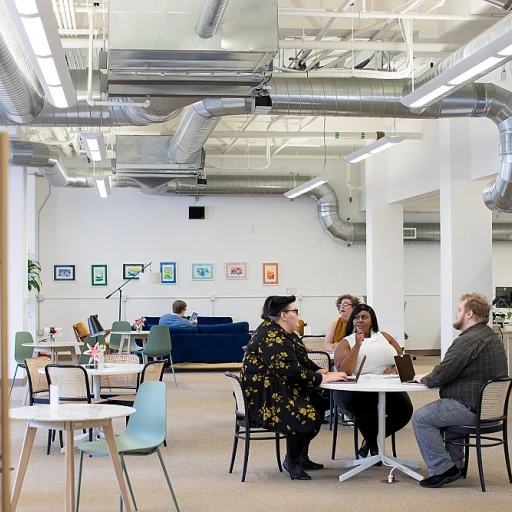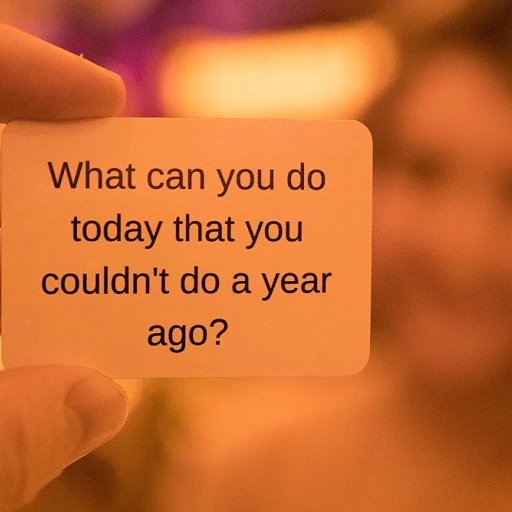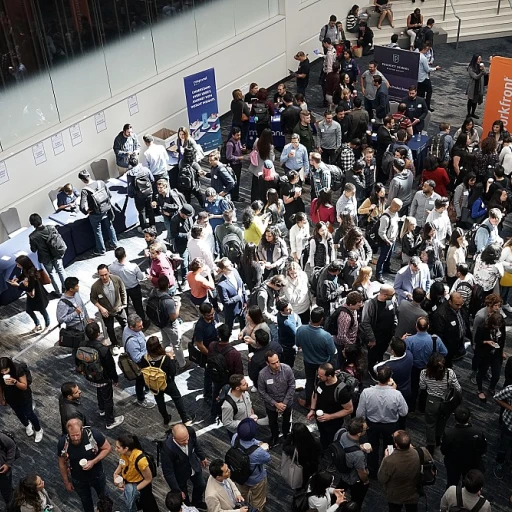
Understanding Virtual Reality in Education
Virtual reality (VR) is increasingly becoming a transformative element within the educational landscape, ushering in a new era of immersive learning experiences. As educators and students alike explore the possibilities of this cutting-edge technology, understanding how VR is reshaping the way we learn is essential. This includes recognizing its potential to disrupt traditional teaching methods by introducing both virtual education and field experience within a classroom environment.
Immersive Experiences in Learning
At its core, virtual reality blurs the lines between the real and the virtual, providing students with an interactive learning environment that offers an "in-the-field" experience without leaving the classroom. This level of immersion is key, as students can explore locations, dive into complex topics, or interact with data in ways that traditional methods simply cannot offer. Through VR technologies, education becomes not only more engaging but also more effective, enabling students to deeply absorb material by being part of it.
Interactive Learning and Simulations
One of the most significant advantages of virtual reality in education is its ability to create highly realistic simulations. By stepping into an interactive virtual space, students can undertake simulations that were once limited to theoretical discussions. This has substantial implications for fields where hands-on experience is crucial. Whether it’s dissecting virtual organisms or simulating chemical reactions, VR allows for experimentation in a risk-free environment, preparing students effectively for real-world scenarios.
The broad application of VR extends beyond traditional school subjects into professional training and reskilling initiatives. Here, simulations can help learners polish their skills in various domains including healthcare, engineering, and the military. This application in reskilling is further explored in this article on AI-enhanced VR learning experiences.
The Frontier of Educational Technology
As we stand on the brink of educational transformation, VR is pioneering the way for immersive technologies, including augmented reality, that combine to redefine the learning experiences. This reality technology not only makes learning more fun but also opens the door to personalized education, catering to the unique needs and paces of students. As this field evolves, it signals a shift toward more inclusive and accessible education, setting the stage for what the future of learning might hold.
Virtual reality is not just a novel gadget; it’s a transformative tool that promises to revolutionize the way we perceive and engage with education. With its ability to involve students in immersive, interactive sessions, VR is enhancing the educational frontier, paving the way for students to learn in an entirely new dimension.
The Role of Virtual Reality in Reskilling
Navigating the Reskilling Process with Virtual Reality
The integration of virtual reality in education is opening new horizons for reskilling, offering immersive and interactive learning experiences that were once unimaginable. Virtual reality technology is breathing new life into how students and professionals alike prep for new opportunities and adapt to the ever-evolving job market.
By simulating real-world environments, virtual reality facilitates effective learning, allowing learners to embrace roles and tasks in a controlled yet realistic setup. Reality education, through interactive and immersive simulations, aids in developing critical skills without the risks involved in live field situations.
Schools and educational institutions are increasingly adopting immersive technologies to foster frontier learning and fast-track reskilling. This approach augments the traditional learning environments, providing a cost-effective avenue for students to gain practical experience. As students interact with these technologies, they gain familiarity with cutting-edge tools that are crucial for future roles in various fields.
Virtual and augmented reality experiences create a dynamic classroom environment where reality, augmented through technology, shapes how students learn and apply knowledge. This interactive learning methodology not only enhances their grasp of subject matter but also prepares them to navigate complex challenges in their respective careers.
The benefits of virtual reality in education are profound, making it a valuable component of the future virtual education frontier. As schools further incorporate these technologies into their curriculums, we can expect a more unified approach to learning virtual skills that align with the demands of the digital economy.
Benefits of Virtual Reality for Learners
Advantages of Virtual Reality for Learners
Virtual reality (VR) has been heralded as a breakthrough in education, offering students a dynamic platform for immersive learning experiences. This integration of technology in the classroom provides numerous benefits that enhance the educational environment and improve learning outcomes. One significant advantage of VR in learning is its ability to create interactive learning opportunities. By simulating real-world scenarios and environments, VR allows students to interact within a highly controlled and safe setting. This interactive approach encourages students to learn and explore uncharted concepts at the education frontier without the limitations of physical classrooms. The flexibility of VR also extends to its practicality in providing cost-effective simulations. Traditional methods of field education can often be expensive and logistically challenging. With VR, schools can replicate these experiences virtually, offering students the chance to engage in activities that would otherwise be outside the school's budget or environmental constraints. VR serves as an excellent alternative for field trips or lab experiments, making high-quality education more accessible. Furthermore, VR technology personalizes learning experiences to cater to individual student needs. By leveraging data analytics, educators can track students' progress and tailor the virtual curriculum to ensure effective learning outcomes. The immersive aspect of VR makes it easier for students to retain information, as they learn by experience rather than mere observation. Lastly, the role of augmented reality in education adds another layer of learning virtual experiences. This synergy of VR and augmented reality empowers students to perceive the world in new ways, extending their reality and providing endless opportunities for innovation in learning. Notably, this approach aligns with future virtual trends where students are increasingly expected to interact with immersive technologies. For those interested in integrating such technologies in workforce training, enhancing workforce efficiency with an HR document management system could complement VR initiatives by streamlining the administrative aspects of education programs, ensuring that the primary focus remains on effective student learning outcomes.Challenges and Considerations
Addressing Challenges and Key Considerations
While the potential of virtual reality in the educational arena is vast, employing this technology is not without its challenges. One of the primary hurdles is the cost associated with implementing virtual and augmented reality technology. Despite becoming more cost-effective over time, schools and educational institutions may find the initial investment in immersive technologies, such as VR headsets and interactive hardware, to be significant. Moreover, the integration of virtual reality into the current educational framework requires substantial adjustments. Schools must ensure their infrastructure can support these new technologies, creating an immersive environment for students that enhances learning experiences rather than disrupting them. This involves not only hardware but also software upgrades, necessitating ongoing support and maintenance. Another critical consideration is the training required for educators to effectively facilitate virtual learning. Teachers need to become adept with VR technology to provide students with the most effective learning experiences possible. Without proper training, the immersive potential of VR could be lost in traditional classroom settings. There are also concerns surrounding data analytics and privacy. As students interact with virtual environments, a large amount of data is generated. Ensuring this data is managed securely and in compliance with privacy laws is essential. Despite these challenges, the potential of VR, as highlighted across other sections, remains influential in pioneering future educational trends. The ability to offer simulations and frontier learning experiences makes it a promising field for effective reskilling and learning, particularly in fields where hands-on experience is crucial.Success Stories and Case Studies
Real-World Applications of Virtual Reality in Education
Virtual reality is not just a futuristic concept; it is already making waves in the education sector. By transforming traditional learning environments into immersive experiences, VR is helping students interact with complex subjects in ways that were previously unimaginable. Several institutions have successfully integrated VR into their curricula, demonstrating its potential as an effective tool for reskilling and enhancing learning experiences.
Case Studies Highlighting VR Success
- Medical Training: In the medical field, VR simulations are providing students with realistic practice scenarios. These immersive technologies allow learners to experience surgical procedures in a controlled environment, significantly improving their skills before entering the operating room.
- Engineering and Architecture: Schools are using VR to help students visualize and interact with complex structures. This interactive learning approach enables them to understand spatial relationships and design principles more effectively.
- Language Learning: Virtual reality education is breaking down language barriers by offering students virtual environments where they can practice speaking with native speakers. This frontier learning method enhances their ability to learn new languages in a more engaging and interactive manner.
Challenges Overcome by VR Implementations
While the integration of VR in education has its challenges, such as cost and accessibility, successful case studies show that these can be mitigated. Schools that have adopted VR are finding it to be a cost-effective solution in the long run, as it reduces the need for physical resources and allows for scalable learning experiences.
Data-Driven Insights and Future Prospects
Data analytics is playing a crucial role in refining VR applications in education. By analyzing student interactions and learning outcomes, educators can tailor VR experiences to better meet the needs of learners. As technology continues to evolve, the future of virtual and augmented reality in education looks promising, with more schools expected to adopt these immersive learning tools to prepare students for the challenges of tomorrow.
Future Trends in Virtual Reality and Education
Emerging Trends in Virtual Reality Education
As we look towards the future, virtual reality (VR) in education is poised to revolutionize how students learn and interact with their learning environment. The integration of immersive technologies is not just a trend but a transformative shift in the education frontier. Here are some key trends to watch:
- Immersive Learning Experiences: The future of education will see a rise in immersive learning experiences that allow students to engage with content in a more interactive and effective manner. This approach helps students learn complex concepts through simulations and interactive learning modules.
- Augmented Reality Integration: Augmented reality (AR) is set to complement VR by providing an additional layer of interactivity. Schools and educators are exploring how AR can enhance classroom experiences, making learning more engaging and accessible.
- Cost-Effective Solutions: As VR technology becomes more mainstream, the cost of implementing these tools in educational settings is expected to decrease. This will make it more feasible for schools to adopt VR and AR technologies, broadening access to these powerful learning tools.
- Data Analytics in Education: The use of data analytics will play a crucial role in understanding how students interact with virtual environments. This data will help educators tailor learning experiences to meet the individual needs of students, making education more personalized and effective.
- Frontier Learning in Various Fields: VR is not limited to traditional subjects. Fields such as medicine, engineering, and the arts are exploring how virtual and augmented reality can provide students with hands-on experiences that were previously impossible.
These trends highlight the potential of VR to create a more dynamic and interactive learning environment. As technology continues to evolve, the possibilities for virtual reality education are vast, promising a future where learning is not only more effective but also more engaging for students.













